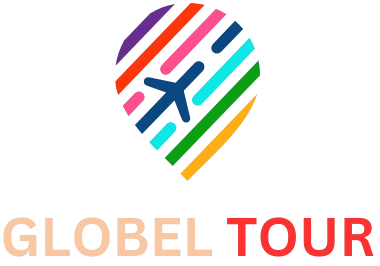Medical charts are fundamental tools in healthcare, serving as comprehensive records of a patient’s medical history, treatment plans, and progress over time. These documents are essential for ensuring continuity of care, facilitating communication among healthcare providers, and ultimately improving patient outcomes. In this article, we will explore the components, importance, and evolution of medical charts, as well as the impact of technology on their use.
What is a Medical Chart?
A medical chart, often referred to as a patient chart, is a systematic documentation of a patient’s medical history and treatment. It typically includes a variety of information, such as:
- Patient Identification: Basic demographic information, including the patient’s name, date of birth, and contact details.
- Medical History: A record of past illnesses, surgeries, allergies, and family medical history.
- Medications: Current prescriptions, over-the-counter medications, and any supplements the patient is taking.
- Physical Examination Findings: Notes from healthcare providers documenting the results of physical examinations.
- Diagnostic Tests: Results from lab tests, imaging studies, and other diagnostic procedures.
- Treatment Plans: A detailed outline of recommended treatments, therapies, and interventions.
- Progress Notes: Ongoing documentation of the patient’s condition, responses to treatment, and any changes in their health status.
Together, these elements create a comprehensive overview of a patient’s health, enabling healthcare providers to make informed decisions about diagnosis and treatment.

The Importance of Medical Charts
Medical charts play a vital role in patient care for several reasons:
1. Continuity of Care
A well-maintained medical chart allows for continuity of care, ensuring that all healthcare providers involved in a patient’s treatment have access to the same information. This is particularly important for patients with chronic conditions who may see multiple specialists. Having a comprehensive record helps prevent errors, redundant tests, and miscommunications.
2. Facilitation of Communication
Effective communication among healthcare providers is essential for delivering high-quality care. Medical charts serve as a common reference point, allowing physicians, nurses, and other healthcare professionals to share information seamlessly. This collaboration is critical for coordinating care and making timely adjustments to treatment plans.
3. Legal Documentation
Medical charts serve as legal documents that can be referenced in case of disputes or malpractice claims. Accurate and thorough documentation can protect healthcare providers by demonstrating that appropriate care was delivered based on established standards.
4. Research and Quality Improvement
Aggregating data from medical charts can contribute to clinical research and quality improvement initiatives. Analyzing patterns in treatment outcomes, adherence to protocols, and patient demographics helps healthcare organizations improve their services and enhance patient safety.
The Evolution of Medical Charts
Traditional Paper Charts
Historically, medical charts were maintained on paper. This method involved manual documentation and often resulted in challenges such as illegible handwriting, lost files, and difficulties in accessing patient information quickly. The limitations of paper charts led to inefficiencies and increased risks for errors.
The Shift to Electronic Health Records (EHR)
With the advent of technology, the healthcare industry began transitioning to electronic health records (EHR). EHR systems have revolutionized the way medical charts are created and managed. Key benefits of EHR include:
- Accessibility: EHRs can be accessed by multiple healthcare providers in real-time, facilitating timely decision-making.
- Searchability: Electronic records can be searched easily, allowing providers to find specific information quickly.
- Integration: EHR systems can integrate with other healthcare technologies, such as lab systems and imaging centers, enabling a more comprehensive view of a patient’s health.
- Enhanced Security: Digital records can be encrypted and protected with passwords, reducing the risk of unauthorized access.
The Rise of Telemedicine
The COVID-19 pandemic accelerated the adoption of telemedicine, which further emphasized the importance of accessible and accurate medical charts. Telehealth visits require up-to-date charts to ensure that healthcare providers can deliver effective care remotely. EHRs play a critical role in supporting telemedicine by allowing for real-time updates and communication between patients and providers.
The Future of Medical Charts
As healthcare continues to evolve, medical charts will also undergo significant changes. Here are some trends to watch for in the future:
1. Artificial Intelligence (AI) and Machine Learning
AI has the potential to enhance medical charting by automating data entry, analyzing patient information, and even predicting outcomes based on historical data. AI-driven tools can help identify patterns that may not be immediately apparent to healthcare providers, leading to more personalized treatment plans.
2. Interoperability
Efforts to improve interoperability among different EHR systems are underway. Enhanced interoperability will allow for better sharing of patient information across different healthcare organizations, ensuring that providers have a complete picture of a patient’s health, regardless of where they receive care.
3. Patient Involvement
Patients are increasingly encouraged to take an active role in their healthcare. With the rise of patient portals, individuals can access their medical charts, review lab results, and communicate with their healthcare providers. This empowerment can lead to improved patient engagement and better health outcomes.
4. Focus on Data Privacy and Security
As medical charts become increasingly digital, concerns about data privacy and security will continue to grow. Healthcare organizations will need to invest in robust cybersecurity measures to protect sensitive patient information from breaches and unauthorized access.
Conclusion
Medical charts are indispensable tools that form the backbone of patient care. They facilitate continuity of care, improve communication among healthcare providers, and serve as essential legal documents. The transition from traditional paper charts to electronic health records has transformed the healthcare landscape, making patient information more accessible and manageable.
As technology continues to advance, medical charts will evolve further, incorporating innovations such as AI, interoperability, and patient engagement strategies. By understanding the significance of medical charts, both healthcare providers and patients can appreciate their role in delivering high-quality care and promoting positive health outcomes. In an ever-changing healthcare environment, the importance of accurate and comprehensive medical documentation cannot be overstated.

